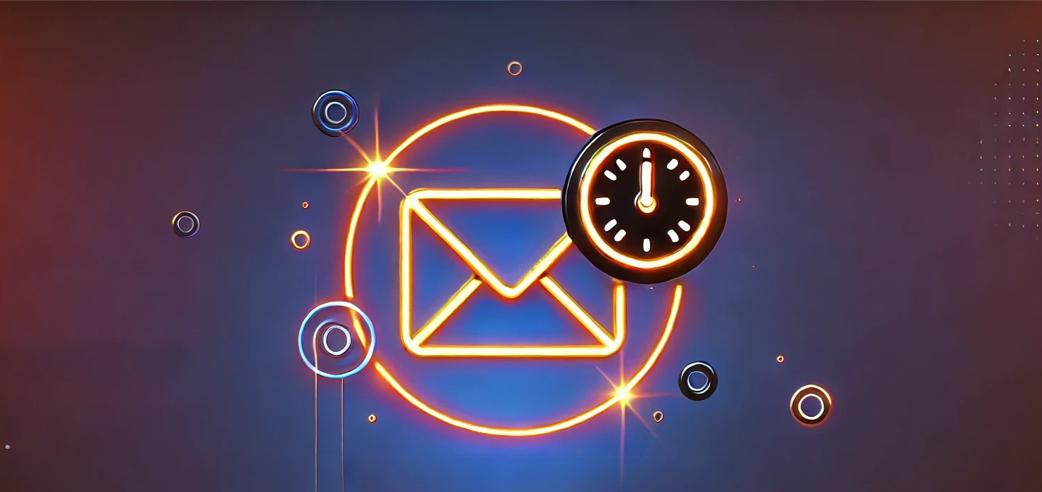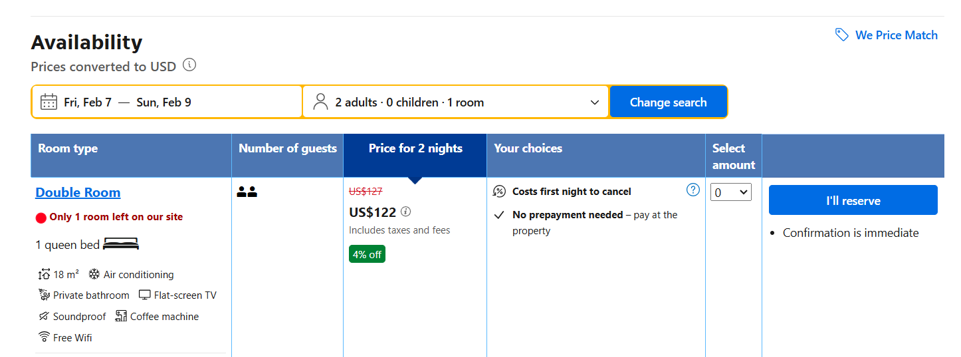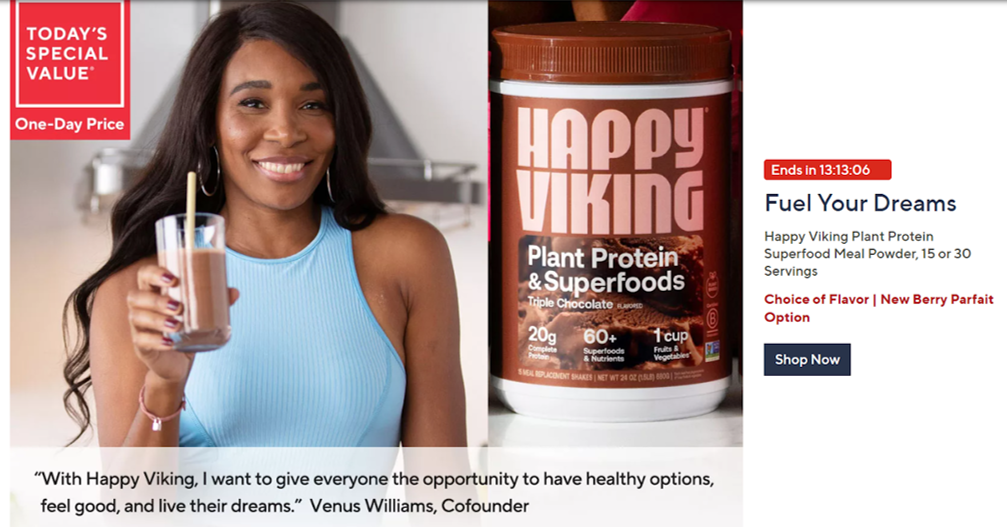- Home
- Fundamentals of Email Marketing
- FOMO Marketing: 5 Powerful Str ...

✨ Key takeaways:
⭐ FOMO is a psychological trigger that is used in marketing to drive immediate action.
⭐ FOMO makes people act fast by triggering emotional decision-making and leveraging social proof.
⭐ FOMO tactics in emails can be one-time offers, low-stock alerts, exclusive access, and others.
⭐ Effective FOMO is created by a combination of clear CTAs, tailored messaging, and A/B testing.
⭐ FOMO can boost short-term sales and deepen brand loyalty and long-term engagement.
Have you ever felt like you were missing out on a great deal or an exclusive event? That gnawing feeling is known as FOMO, or fear of missing out. Marketers have been using it for years to drive engagement and conversions. FOMO marketing plays on psychological triggers that motivate consumers to take action before they miss out on something valuable.
Let’s look at a real-life FOMO case. In December 2020, Nike and Dior released two trendy sneaker models, Dior x Air Jordan 1 High and Dior x Air Jordan 1 Low, limited to 8,500 and 4,700 pairs, respectively, in an iconic collaboration. The official retail price for a pair was a staggering $2,200.However, according to Yahoo!life, the Dior x Air Jordan 1 High resale prices skyrocketed after its retail release, thanks to the smart FOMO strategy. It was the most expensive shoe on the secondary market in terms of resale value in 2020, with sales hitting as much as $13,000 per pair!
The contemporary world is like a metaverse where its residents are constantly bombarded with content and promotions, so the FOMO advertising strategy stands out as an effective tool. It encourages impulse buying and strengthens brand loyalty by making customers feel part of an exclusive experience. In this article, we’ll explore what FOMO marketing is, why it works, where it’s used, and—most importantly—how to implement it in your email campaigns.
As Forbes nicely put it, FOMO is the difference between getting by and getting ahead. So let’s dive into the FOMO world, and we’ll start by asking a question:
What Is FOMO?
The curious FOMO acronym stands for the fear of missing out, a psychological trigger that creates a sense of urgency. It is very deep-rooted in our brain and comes from the human nature to seek social belonging and avoid regret. As you know, people don’t want to miss out on opportunities, limited-time offers, or exclusive experiences. This feeling pushes them to take action before it’s too late. This Science Direct study shows that FOMO influences compulsive consumer behavior, making people more likely to engage with brands, purchase products, and participate in experiences when they perceive them as scarce or exclusive.
As you can figure out, FOMO is totally based on human nature. So, at some point in the past, long before the arrival of the digital age, marketers came to a genius conclusion: let’s use the FOMO phenomenon in business! Later, with the introduction of internet technologies, it expanded online.
What Is FOMO Marketing?
We can responsibly claim that FOMO marketing is a superb strategy that leverages this psychological trigger to increase sales, engagement, and customer loyalty. Just think of it: by making an offer feel exclusive, urgent, or limited, you encourage the customer’s immediate action!
You can use FOMO tactics in various ways, choosing from the tools your business has at hand. You can use limited-time discounts to showcase what other customers purchase in real life or invite influencers to make your product or service look trendy. This approach taps into the ancient human fear of missing out, trying to join the community and be “like all the others,” making your email marketing campaigns more compelling.
Why Is FOMO Marketing Effective?
FOMO marketing works fine for several reasons that may come as a blend. Let’s look at what makes FOMO advertisements so efficient:
- First, the FOMO marketing creates a sense of urgency, pushing customers to act quickly: Hurry up, or you will miss your chance!
- It also leverages social proof, showing that others are already benefiting: Gosh, just look at what others do!
- FOMO marketing taps into emotional decision-making, making people buy out of impulse: This is your lifetime opportunity—don’t miss it!
- It enhances brand credibility, as exclusivity makes products seem more valuable: You can be the chosen one!
- FOMO marketing increases engagement rates, as customers are more likely to interact with brands when they feel urgency: Don’t be late with our exclusive offer—click on the link now!
- Finally, the FOMO approach reduces procrastination, making consumers take immediate action rather than delaying their decision: Don’t waste your time—act now!
Where Is FOMO Marketing Used?
You can find plenty of fear of missing out examples across various platforms, including:
🔹 E-commerce websites: Check out flash sales, stock scarcity alerts, and real-time purchase notifications, with eBay.com and Amazon.com being good examples.
🔹 Social media: Live streams, limited-time content, and influencer promotions. Just look at what influencers offer on Instagram—they are trying to tell you: join us now, or you will miss it all!
🔹 Email marketing: These are exclusive deals, countdown timers, and low-stock alerts. They start with personalization, catchy subject lines, and seductive offers, spiced up with strong CTAs. In this case, we strongly recommend you conduct A/B testing, playing with various CTA tools, subject lines, personalization options, and other promotion elements that help create a FOMO feeling.
🔹 Event promotions: Across the internet, you’ve probably seen various approaches to early-bird pricing, VIP access, and limited ticket sales. Tick-tock, tick-tock, time is running up!
🔹 Subscription services: These are limited spots, expiring trials, and exclusive content offers. These messages try to say something like, “Subscribe now to get in touch with the latest trends!”
5 FOMO Marketing Strategies for Email Campaigns
Now, look at real-life FOMO advertising examples to understand how this strategy works. In this part, we will review five actual FOMO examples to see what’s happening on the online marketing battlefields.
1. Limited-time offers
Don’t you know that people hate missing out on a deal? To achieve this, consider creating urgency by offering discounts or perks that expire soon. Here’s the tip: Limited-time offers work exceptionally well during seasonal sales, product launches, and promotional campaigns.
Example: QVC, a global teleshopping giant, uses clearly visible countdown timers and limited-time (Today’s Special Value) offers to remind customers of expiring deals. These offers may also include quotations from influencers or brand ambassadors to build trust and catchy phrases like “Fuel Your Dreams” to push customers to take action immediately. QVC sends their registered users such email notifications daily.
2. Low stock alerts
History tells us that scarcity makes things and products more desirable. You can create urgency in product/service supply and send emails notifying customers when stock is running low. This technique works well in e-commerce, travel, and event ticketing.
Example: Booking.com shows “Only 1 room left on our site” (highlighted red below) in emails and on its “Deals for the weekend” webpage offer, urging users to book immediately. This simple message creates urgency—that famous FOMO feeling—and encourages potential customers to finalize their purchase before they lose their chance when planning a trip to Rome and the Vatican. An extra motivation is a price discount, from $127 to $122 per stay, which is also shown in the picture below.

3. Influencer partnerships and collaborations
Partnerships with influencers or industry experts to promote your products or services can dramatically amplify FOMO by leveraging their authority and reach. The trick is to start a collaboration with the proper person that fits your target audience.
Example: Jane Kønig is a Danish jewelry brand established in 1989 that sells its designer’s pieces all over Europe. Below you can see their email that showcases the brand’s collaboration with Fia Hamelijnck, Dutch content creator, art director, and model, well-known in her country and across Europe. The target audience would associate her with Jane Kønig jewelry, so her choice as a brand ambassador is very logical. This type of messaging reassures customers that they’re making a good decision based on others’ choices.
4. Exclusive VIP access
You can urge customers to feel special by offering early access to sales or new products. For example, VIP access is an excellent FOMO tool for achieving this goal. It creates a sense of exclusivity that can boost brand loyalty and long-term customer retention.
Example: In their email campaigns, Nike offers exclusive membership products to their registered customers to create a feeling of being chosen and awarded with privileges, which is a 100% FOMO technique. As the customer has been granted eligibility for Nike’s latest releases, brand loyalty will grow stronger and stay for a long time. Check out this CTA: Be one of the first to buy without the hassle of waiting in line.
5. Cart abandonment FOMO approach
Think of reminding customers what they left behind and offer a limited-time incentive to complete the purchase. Plenty of shoppers abandon carts, but a well-crafted email can bring them back to drive your sales.
Example: Victoria’s Secret sends cart abandonment emails with cool messages, like this one: “You Left a Whole Lotta Sexy in Your Shopping Bag.” By the way, hard rock fans may find this line resembling Led Zeppelin’s famous song Whole Lotta Love, which shows quality, deep-inside copywriting in this case. Some brands also include limited-time discounts or free shipping offers to entice hesitant buyers further.
To Sum Up
Congrats on getting to our summary! So, what is FOMO in text, and how can I use it effectively? Simply put, it’s the use of urgency, scarcity, and exclusivity in your messaging to drive action. Based on the above-mentioned strategies and cases, we can safely say that FOMO marketing is a powerful tool that can significantly boost engagement and conversions for your business.
The key is to make your audience feel they need to act now—whether grabbing a deal, securing a spot, or making a purchase before it’s too late. You can apply FOMO in your emails by offering limited-time discounts, inserting countdown timers, granting exclusive access to goods or services, sending cart abandonment notifications, and inviting influencers who fit your target audience for collaborations.
If you want to maximize the impact of your FOMO email campaigns, consider A/B testing different messaging styles, using dynamic countdown timers, and analyzing performance metrics to refine your approach. Start experimenting with these tactics today, develop your content creatively, and watch your sales grow tomorrow!




